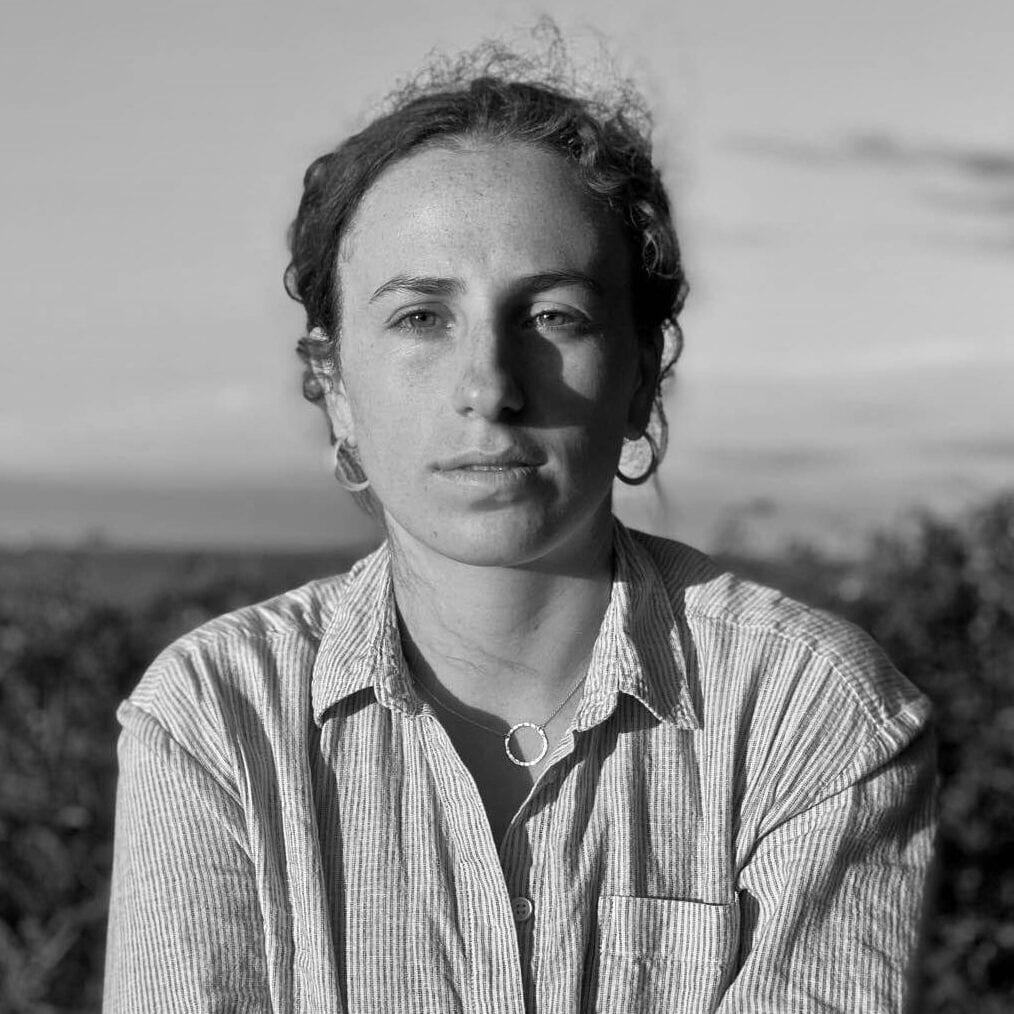Larissa von Planta’s atelier is hidden away in a traditional 1930s Lebanese villa on one of Beirut’s typically haphazard and bustling streets. Standing on her balcony, though, ever so slightly shielded from the heat of the midday sun by a withered palm tree, and surrounded by offcuts of fabrics, bits of ribbon and disused zips, it feels like a completely different world.
Von Planta repurposes pre-loved pieces into contemporary couture, although her eponymous label is so much more than that. Unlike most couture fashion designers, known for using high end and often expensive and unsustainable materials, von Planta redesigns vintage with fine antique and pre-owned textiles; nothing she uses is new.
“I have to be quite strict about it and not just run to the closest shop and buy two metres of fabric,” she tells me. Instead, she scavenges for scraps of material from charity shops, gets pieces from donors and collects unsold fabrics from textile shops around Beirut. “Sometimes we have literally a metre and a half and have to make a jacket, so we have to think about what we are going to combine.”
READ: The coronavirus fashion trends
Such limitations mean that she has to be extremely resourceful and has even restored a corset using bits of material and cotton wool. This, she says, is creatively challenging. “You end up with something that you maybe would not have come up with otherwise.”
Asked about her way of working, the designer describes what could be a British country hunting jacket. It’s not, she explains, but part of a traditional open-sided Chinese tunic from a Lebanon-based client, coupled with a length of tweed to make a long jacket. In pictures, the two textiles have melded effortlessly together — a testament to von Planta’s talent — but she admits that the piece took months to make. “It took more than two months to find the right textile, which was in my archive, but I tried all sorts of different things before that which made it look like a fancy-dress piece, and finally I found the tweed.”
Von Planta enjoys the process, finding herself “naturally drawn” to the challenge. However, the “element of time which we need to find the right pieces” extends beyond finding the right combination of fabrics. All of the young designer’s pieces try to stay true to the history and story behind the garment.
READ: Palestine’s recent history through political landscape posters
This unique approach is tied to von Planta’s family history and took shape after she upcycled textiles gathered by her grandparents “everywhere from Thailand to Mali” for her final collection while studying at Central St Martins in London. It is a philosophy, though, which she insists has developed in Beirut.
The young designer initially moved to the Lebanese capital to collaborate with Palestinian embroiderer Samira Salah, after being “completely blown away” by the craft’s history. “Learning about the history of Palestinian embroidery really put me on a path to understanding where the piece came from, [creating] a sense of respect for the history and story behind a garment.”
Von Planta has gone on to work with a 100-year-old hand-loomed silk shawl from Damascus, lightening the fabric to restore some of the original golden glow, before fashioning it into a dress.
Her debut collection, entitled 2200, consists of a series of re-envisioned fabrics and pre-loved pieces collected in Beirut. “The idea was trying to put character into the old textiles we had and trying to keep those strong identities. They’re loaded with context and history… sort of a storytelling element… reworking and redesigning everything while keeping that history.”

An image from the 2200 show. A jacket made from white vintage leather and embellished with pieces of a 1980s beaded dress. Both vintage pieces were donated in Beirut [Tamara Sade]
“A lot of pieces that I have, have serious tailoring problems… everything in the wrong place, but they are loved pieces; they are loved because of the story. I believe that having that story attached to something and it being your own automatically means that you are going to treasure that piece and keep it going for much longer because it has so much more to it.”
Such stories are both rich and abundant in Beirut. “That’s part of the style of the city.” Beirut, she believes, is the design capital of the Middle East, and is the ideal place to have launched her fashion label. The creative space there allowed her two years to develop and “figure out” her unique and refreshing approach to couture fashion before launching her business.
In recent months, however, Lebanon has accelerated towards economic collapse. After months of anti-government protests and a devastating fiscal crisis compounded by a global pandemic, the country risks slipping into the abyss.
The strong identities and history that have become central to Larissa von Planta’s work are changing and have made her realise “how precarious” Beirut can be. “When you’re working on a freelance basis you could have a good month and then nothing for the next few months. It’s hard because I have to think about keeping my tailor supported, but I like the size of what I’m doing, keeping it very small, very personal”
It’s no surprise to hear, then, that the young designer has no plans to stop her work. “We work on the basis that anything is possible.”











